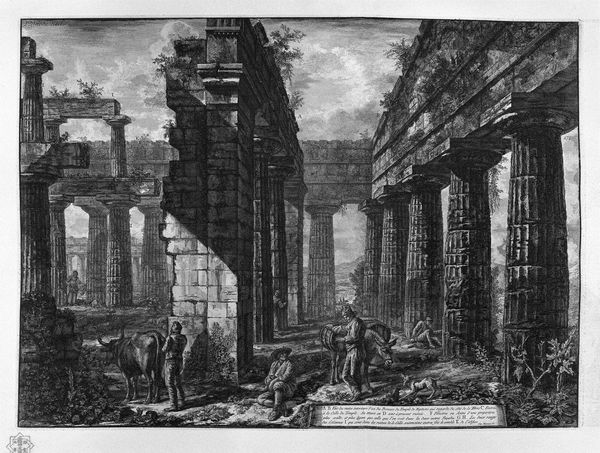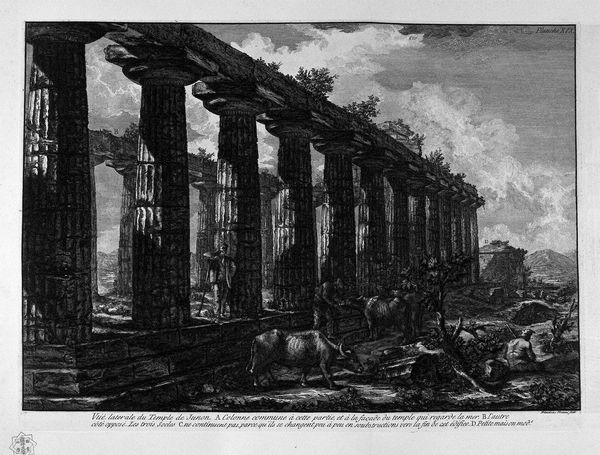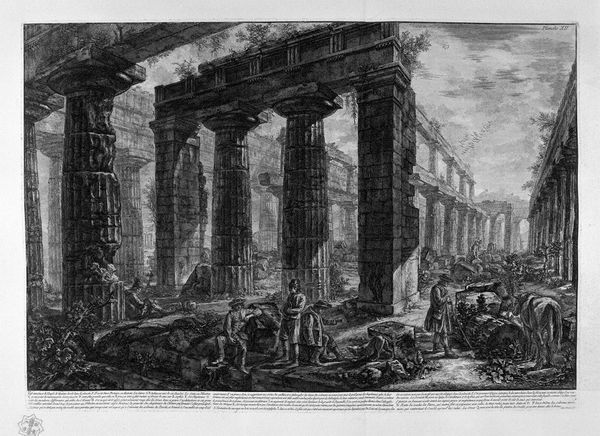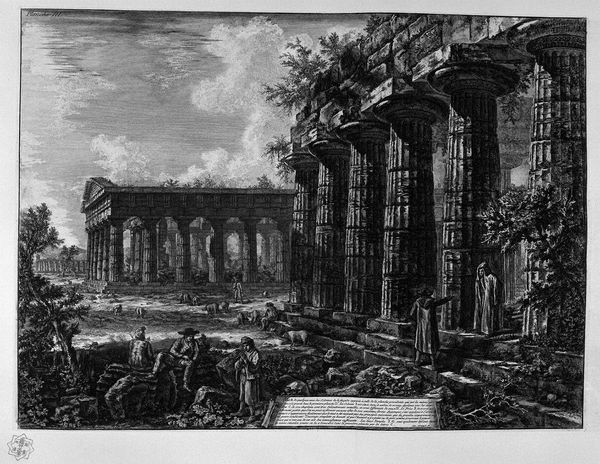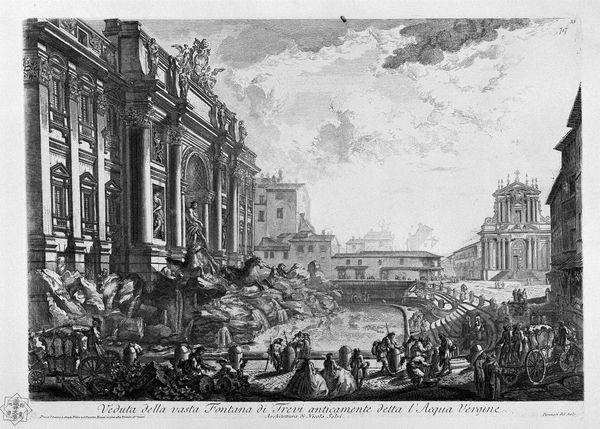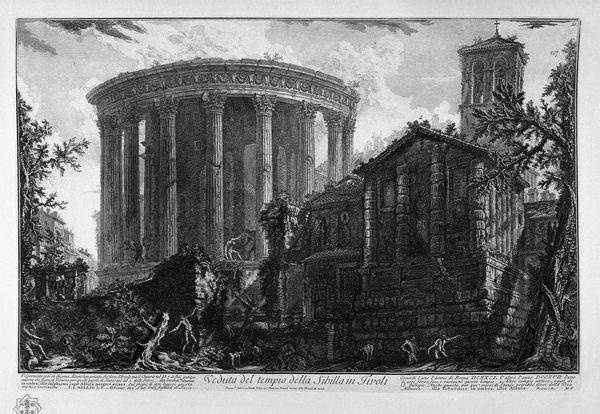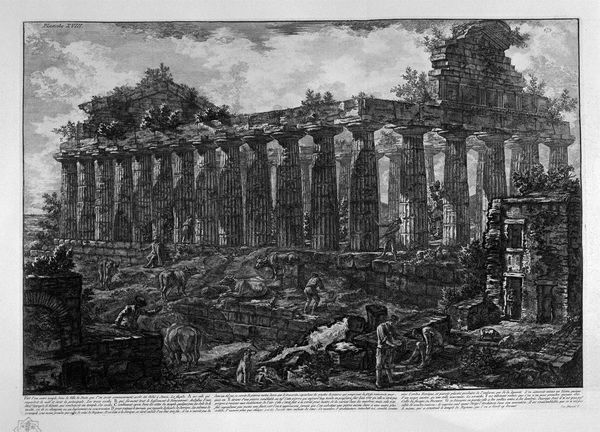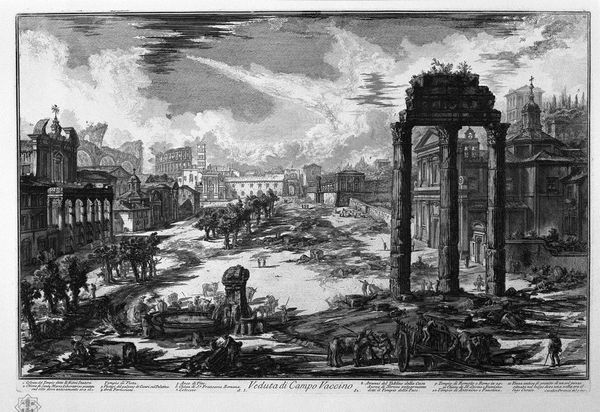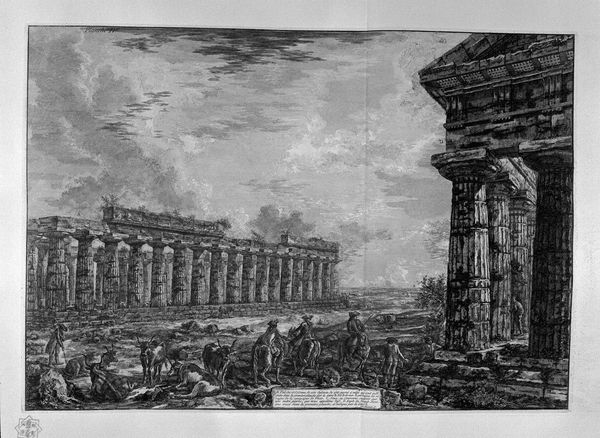
print, etching, engraving
# print
#
etching
#
landscape
#
perspective
#
romanesque
#
ancient-mediterranean
#
cityscape
#
italian-renaissance
#
graphite
#
engraving
Copyright: Public domain
Curator: This is Giovanni Battista Piranesi's "Remains of the Temple of Neptune's Cell," an engraving that offers a dramatic perspective on architectural ruin. Editor: My immediate impression is one of romantic desolation. There's a haunting beauty in the decay. The strong verticals of the columns juxtaposed against the debris evokes a poignant sense of loss, doesn’t it? Curator: Absolutely. Piranesi was fascinated by the grandeur of Rome and its subsequent decline. He often depicted ancient structures in a state of picturesque ruin, and we need to consider the rise of archaeological pursuits during this time when people literally and figuratively dug through history in the face of political, religious, and social upheavals. His prints, which had a wide distribution throughout Europe, catered to a growing interest in classical antiquity. Editor: It speaks volumes about power and its transience, doesn’t it? What was once a testament to human achievement is now a playground for vegetation and contemplation. How might contemporary viewers respond to seeing similar monuments in such disrepair today, particularly structures with problematic pasts? Curator: A crucial question. We must remember the print itself is a carefully constructed fiction, informed by Piranesi's artistic license. The light and shadow play almost theatrically to enhance the scene's emotional impact. This reminds us of how images can actively shape how we engage with history and the visual culture that both propagates and perpetuates systems of belief and governance. Editor: The figures add to this. They're small, almost dwarfed by the ruins, emphasizing the insignificance of the human figure when considered alongside these grand, decayed structures. What do you make of that fellow on the pedestal? Curator: Perhaps he is Piranesi himself! The figures certainly give scale to the immense architecture and, in the face of political upheaval, perhaps provide a moral compass. Piranesi created an active marketplace for antiquity, one where ruins and those who inhabit them could exist within both reality and imagination. Editor: Considering his perspective and manipulation of shadow, there’s certainly much to read here. I find that the composition and sheer scale provoke so much thought, from thinking about legacies of empires to visual communication as a reflection of sociopolitical change. Curator: And for me, I think about how art influences the study of ancient civilizations. The circulation of these images informed perception, and indeed even the very act of physically excavating history for years to come.
Comments
No comments
Be the first to comment and join the conversation on the ultimate creative platform.

